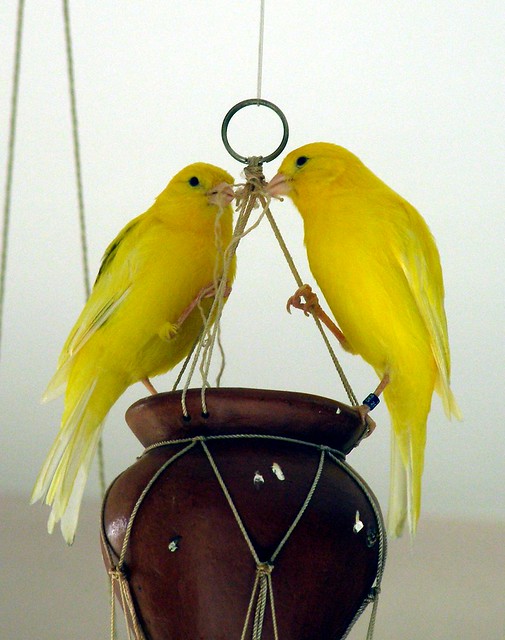 |
| Photo by erix! |
Canaries come in a variety of different colors such as orange, brown, white, black, yellow and red. They can be bred to be in different colors and sometimes they are even bred based on their sound patterns. Sometimes finding a canary that can sing the most beautiful complex melodies became something of a contest. Even today, there are much bird shows in the world where canary owners let their birds compete in a singing competition.
Breeding canaries tend to be a tough challenge because it is hard to determine the sex of the Canaries, which is a crucial part to see whether the bird can sing or not. The breeding conditions have to be optimal as well. They are best to be bred with one pair per cage. Bird cages such as double breeder cages or aviary cages, along with nesting boxes and nesting materials, tend to be an ideal environment for breeding. Initially, they require to get introduced to each other. Once they are seen the male is trying to breed with the female, then it is ideal to put them together in one cage.
During the breeding period, make sure that the Canaries are getting the best nutrition as they can get. Things such as cuttlefish bones, broccoli, apple, hard boiled eggs and bread are great to help replenish any nutritional deficiencies the mother might have during this period. With good nutrition and environment, the entire process should go smoothly.
The mother typically lays four to five eggs and spends four to five weeks to incubate the nest. The father's role is to bring the food and feed the mother. This time, again, good nutrition is ideal for the bird. Be sure to leave a lot of food in your double breeder cage or aviary cage. After the first round of breeding, the pair may go for a second round. The young birds should be separated by the partition on double breeder cages or even separate them to another cage so that they can safely grow.
As they grow up, the tunes they carry intrigue everyone all around. Always tend carefully to canaries because they are not birds who like to be handled much. If they are standing on your hand, then you can be sure they trust you a lot. Ultimately, canaries are the best pet to have if you enjoy beautiful music and breeding them can also be a wonderful experience.
Mika Harimoto is an expert when it comes with animals because she has been living around them for many years.
Article Source: EzineArticles |

No comments:
Post a Comment